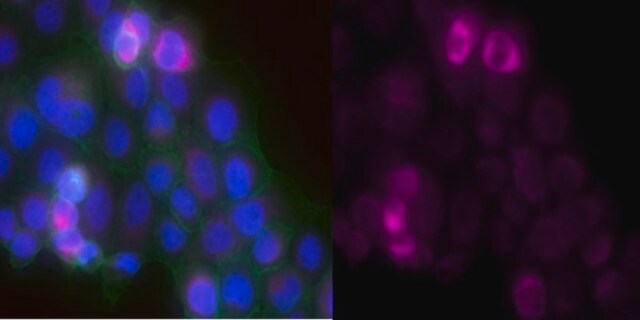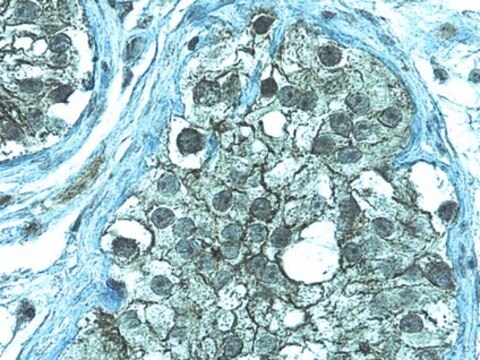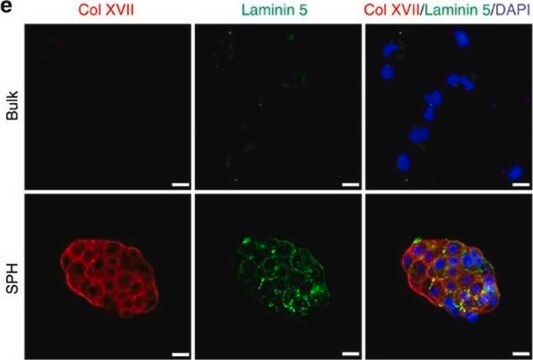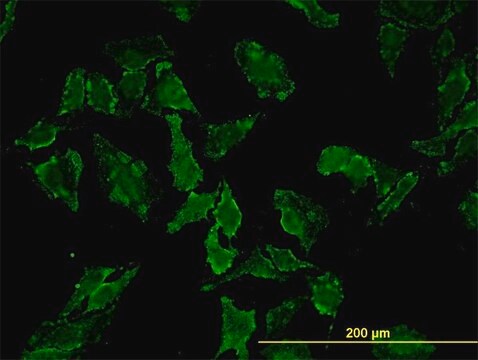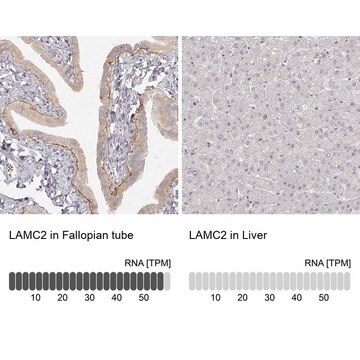MAB19562X
Anti-Laminin-5 Antibody, clone D4B5, Alexa Fluor™ 488 conjugated
clone D4B5, Chemicon®, from mouse
Sinonimo/i:
Anti-B2T, Anti-CSF, Anti-EBR2, Anti-EBR2A, Anti-LAMB2T, Anti-LAMNB2
About This Item
Prodotti consigliati
Origine biologica
mouse
Livello qualitativo
Coniugato
ALEXA FLUOR™ 488
Forma dell’anticorpo
purified immunoglobulin
Tipo di anticorpo
primary antibodies
Clone
D4B5, monoclonal
Reattività contro le specie
human
Produttore/marchio commerciale
Chemicon®
tecniche
flow cytometry: suitable
immunocytochemistry: suitable
Isotipo
IgG1
N° accesso NCBI
N° accesso UniProt
Condizioni di spedizione
wet ice
modifica post-traduzionali bersaglio
unmodified
Informazioni sul gene
human ... LAMC2(3918)
Descrizione generale
Specificità
Immunogeno
Applicazioni
Flow cytometry
Optimal working dilutions must be determined by the end user.
Cell Structure
ECM Proteins
Stato fisico
Stoccaggio e stabilità
Altre note
Note legali
Esclusione di responsabilità
Unless otherwise stated in our catalog or other company documentation accompanying the product(s), our products are intended for research use only and are not to be used for any other purpose, which includes but is not limited to, unauthorized commercial uses, in vitro diagnostic uses, ex vivo or in vivo therapeutic uses or any type of consumption or application to humans or animals.
Not finding the right product?
Try our Motore di ricerca dei prodotti.
Codice della classe di stoccaggio
12 - Non Combustible Liquids
Classe di pericolosità dell'acqua (WGK)
WGK 2
Punto d’infiammabilità (°F)
Not applicable
Punto d’infiammabilità (°C)
Not applicable
Certificati d'analisi (COA)
Cerca il Certificati d'analisi (COA) digitando il numero di lotto/batch corrispondente. I numeri di lotto o di batch sono stampati sull'etichetta dei prodotti dopo la parola ‘Lotto’ o ‘Batch’.
Possiedi già questo prodotto?
I documenti relativi ai prodotti acquistati recentemente sono disponibili nell’Archivio dei documenti.
Il team dei nostri ricercatori vanta grande esperienza in tutte le aree della ricerca quali Life Science, scienza dei materiali, sintesi chimica, cromatografia, discipline analitiche, ecc..
Contatta l'Assistenza Tecnica.
